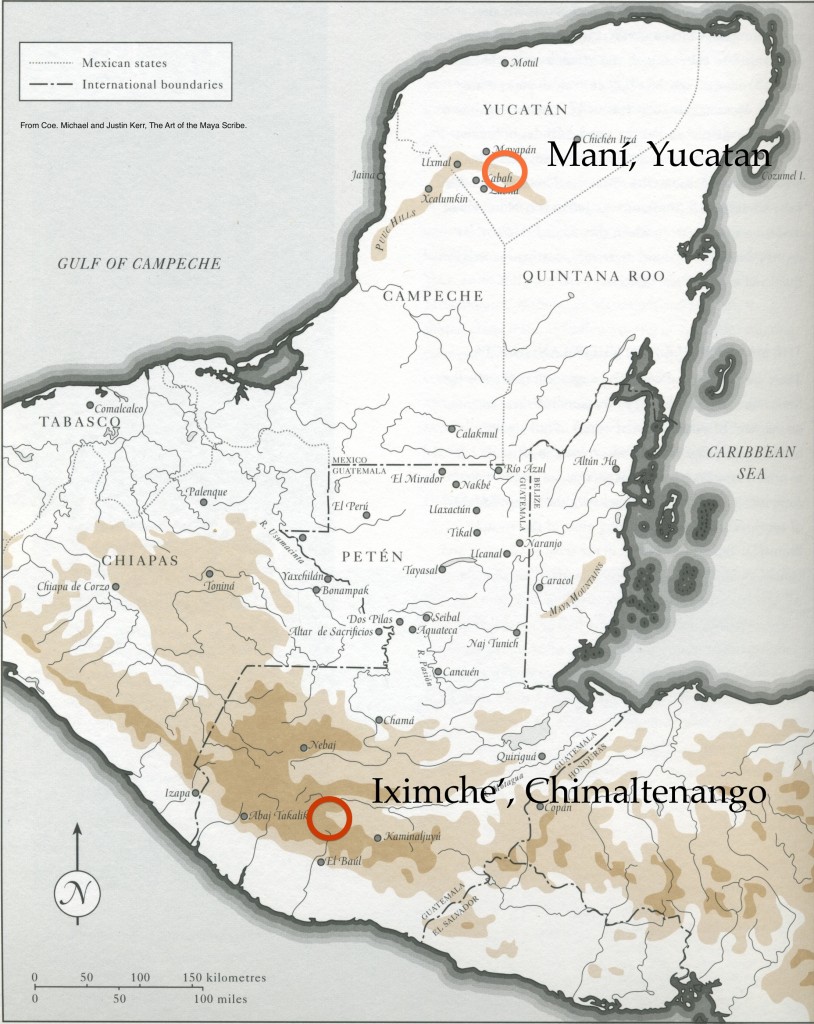
All across the Maya landscape, in recent years, new stelae have been planted. This blog focuses on two: one from Maní in the far northern lowlands, and one from the highlands of Guatemala at Iximche’.

En toda el área maya se han estado erigiendo nuevas estelas en años recientes. Este blog se ocupa de dos de ellas: una levantada en Maní, en las lejanas tierras bajas del norte, y la otra en las tierras altas de Guatemala, en Iximche’.

U Yits’ Ca’an “the dew of heaven” is an agricultural school dedicated to organic, natural food production.
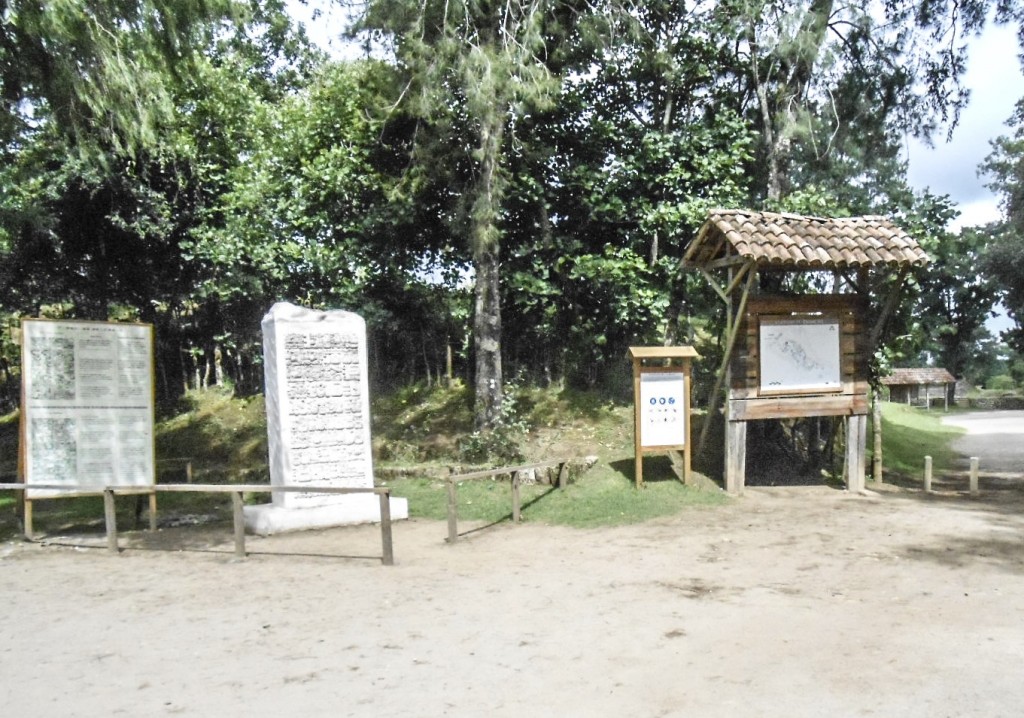
is a Kaqchikel stela at the entrance to the archaeological site. The stela project was organized by the Kaqchikel organization “Kaqchikel Winäq.” Pakal B’alam Rodriguez wrote the text in Kaqchikel and made the first glyph version. Q’aq’awitz Igor Xoyón, with the help of Iyaxel Cojti, made the final version in glyphs. The sculptor was Emerson Chicol.
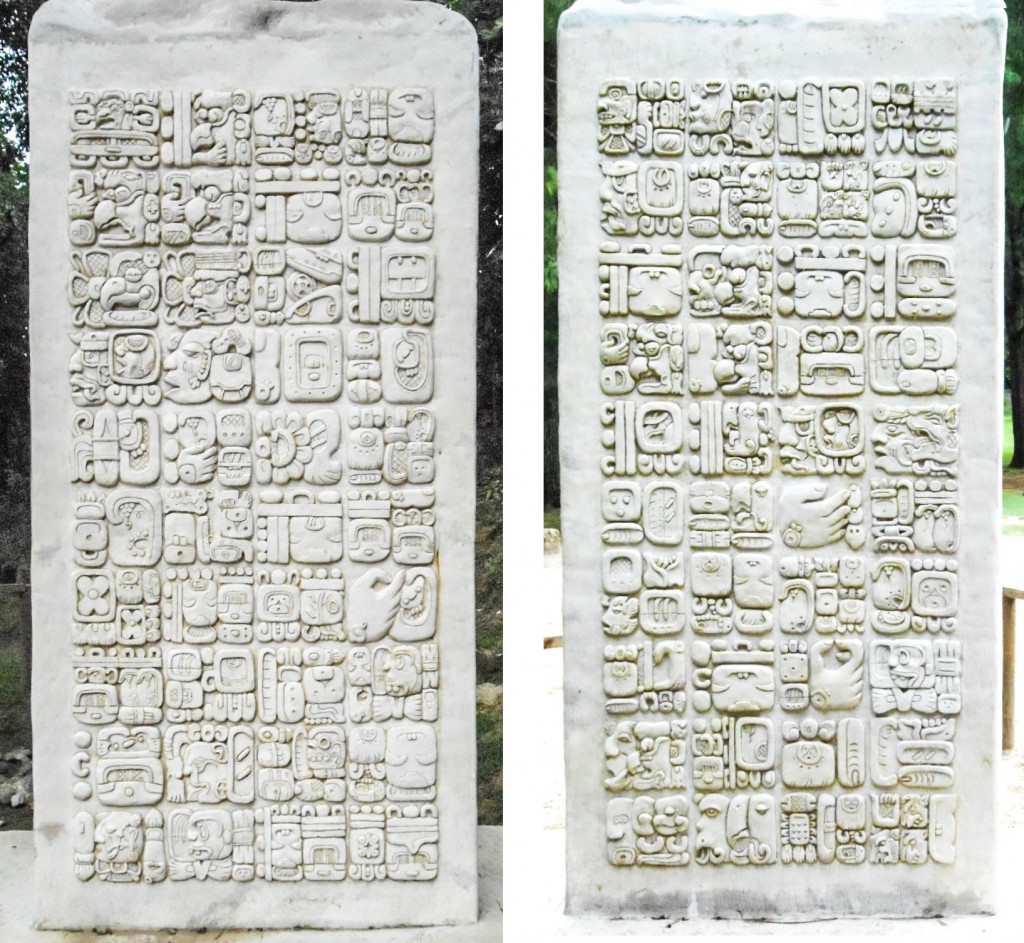
In a remarkable demonstration of epigraphic skills, the history of Iximche’ is told in the Kaqchikel language using Classic Maya glyphs.
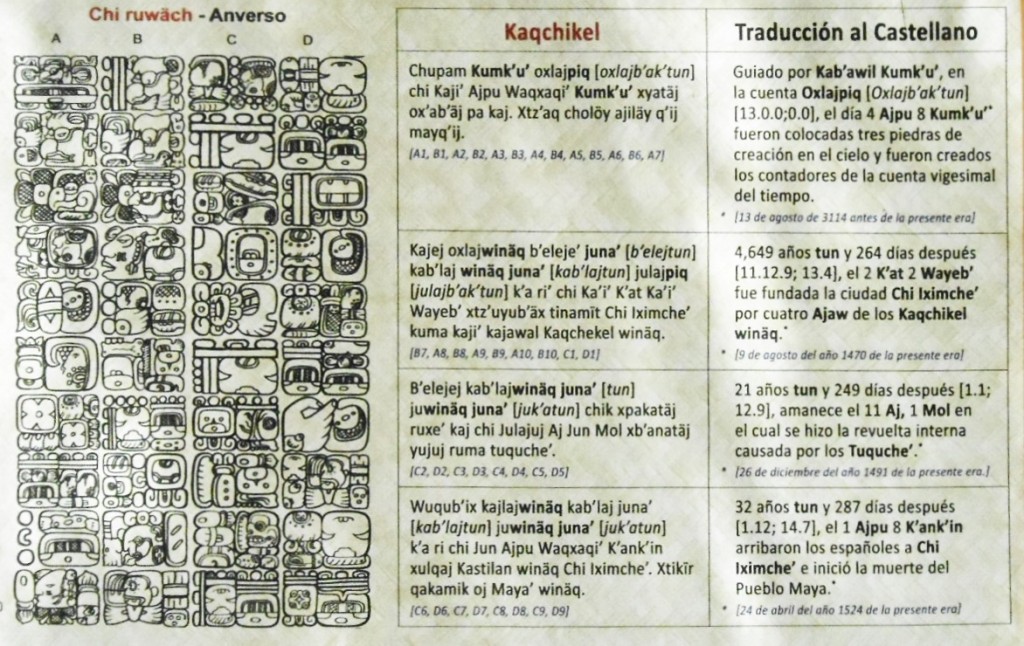
The front side begins with the creation at 4 Ajpu 8 Kumk’u’ and leads up to the arrival of the Spaniards.

Side 2 covers colonial history up to 2012 and the completion of 13 Bak’tuns. A modern-day Rosetta Stone, three languages presented in parallel: Classic Mayan, contemporary Kaqchikel, and contemporary Spanish.

U Yits’ Ca’an, “rocío del cielo”, es una escuela agrícola dedicada a la producción de alimentos orgánicos naturales.

se encuentra una estela kaqchikel, a la entrada del sitio arqueológico. El proyecto de la estela fue organizada por la asociacion Kaqchikel: Kaqchikel Winäq. Pakal B´alam Rodriguez escribio el texto en Kaqchikel e hizo la primera version en glifos. Q´aq´awitz Igor Xoyón, con ayuda de Iyaxel Cojti, hice la versión final en glifos. El escultor de la estela se llama Emerson Chicol.

En una notable demostración de habilidad epigráfica, se cuenta la historia de Iximche’ en idioma kaqchikel, utilizando glifos del período Clásico maya.

El frente comienza con la creación, en la fecha 4 Ajpu 8 Kumk’u’, prosiguiendo luego hasta la llegada de los españoles.

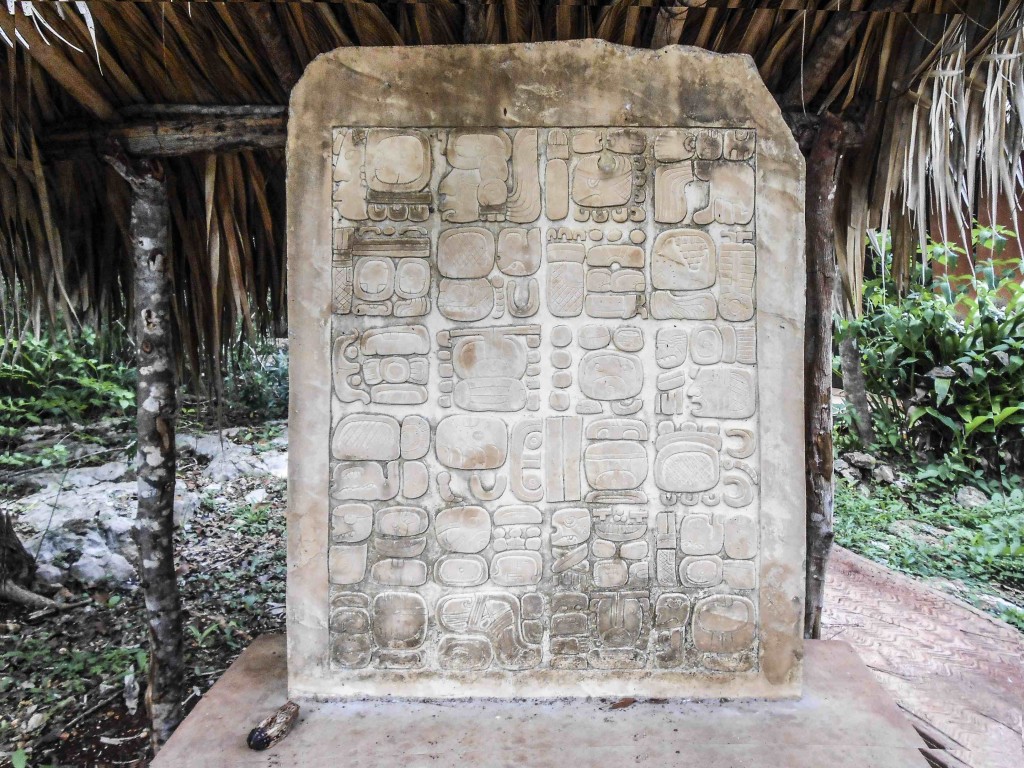
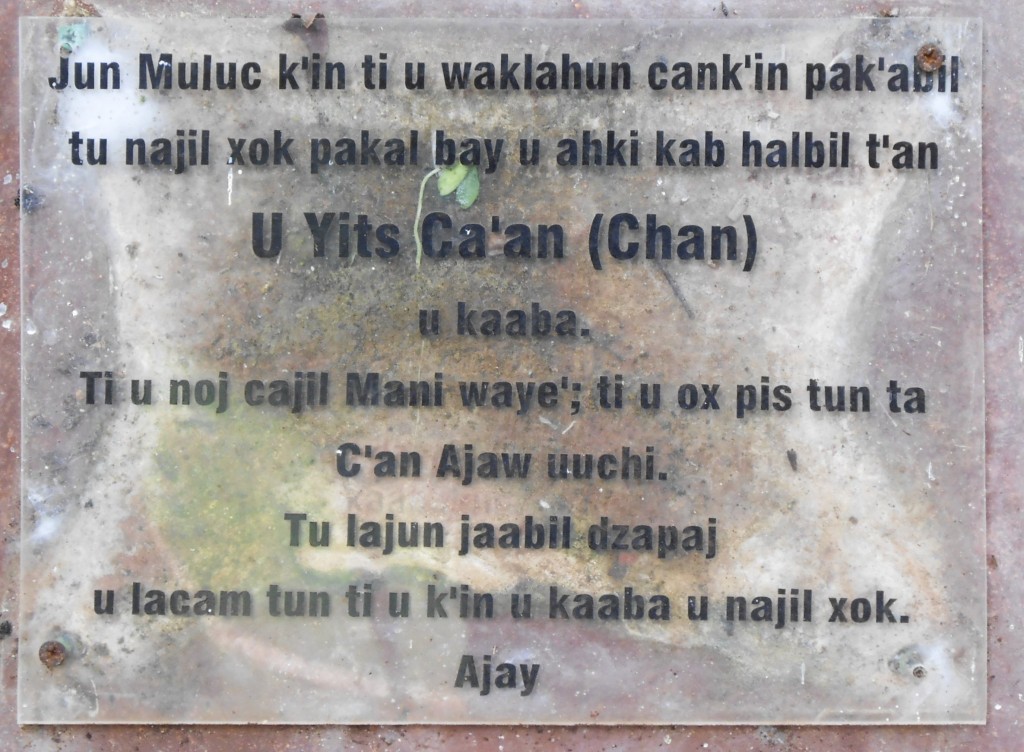
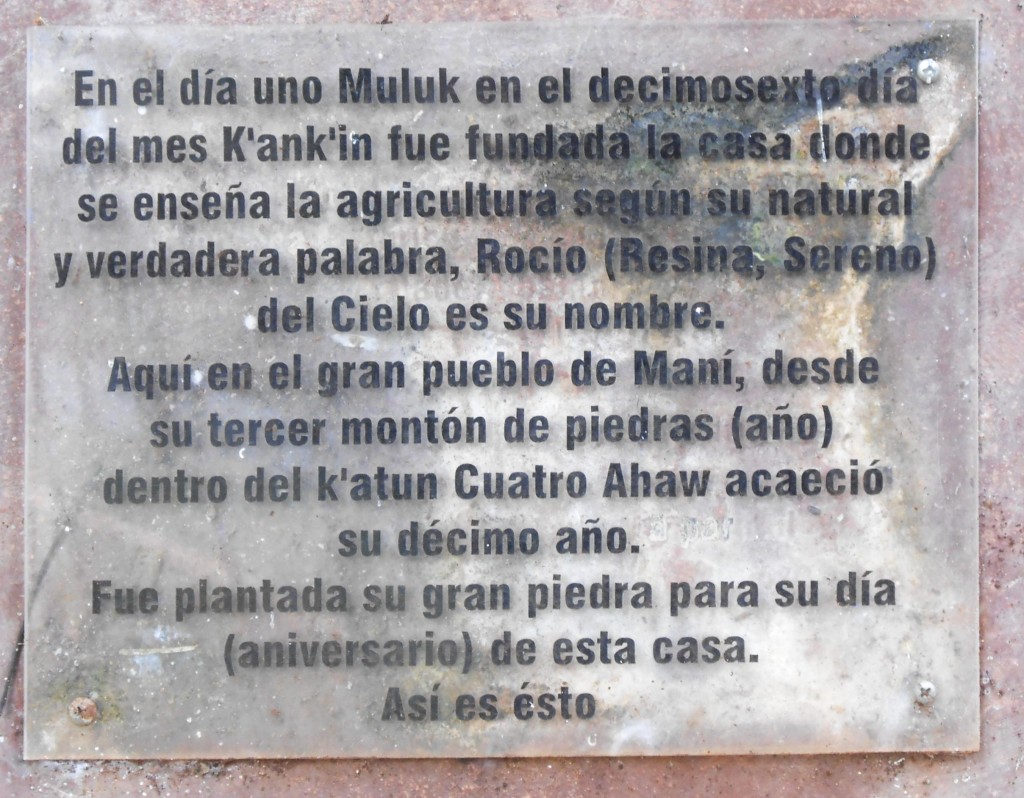
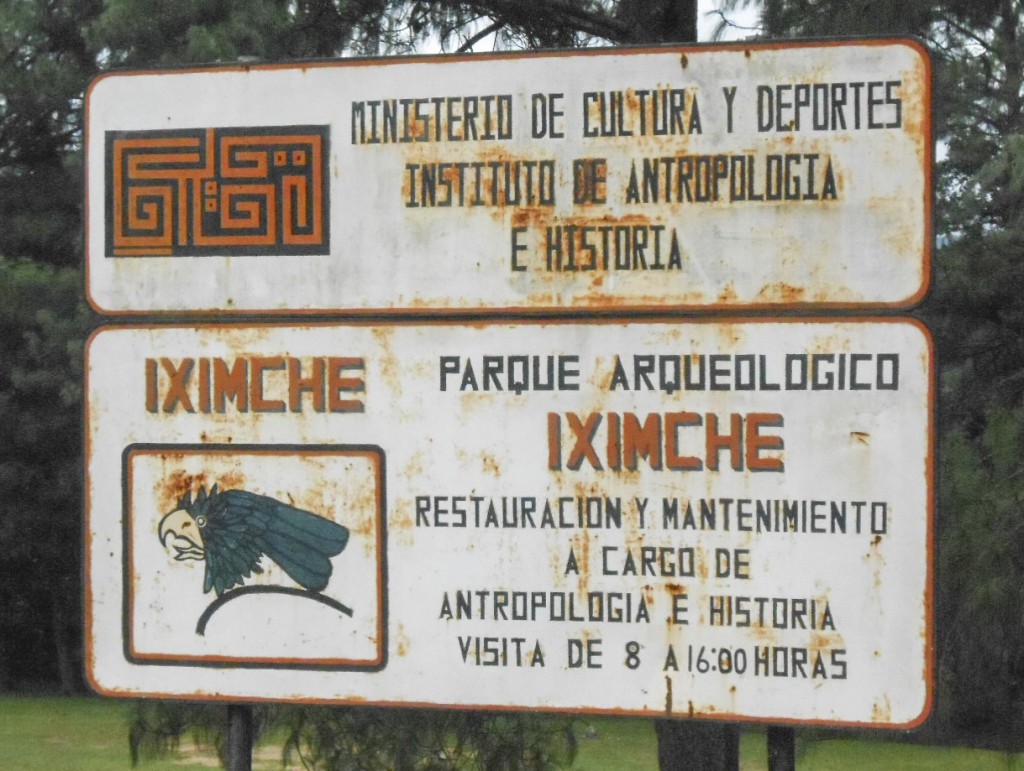

I am sitting in Quintana Roo enjoying the beautiful ocean. Your site was a surprise and a real pleasure to see the glyphs.
Truly moving. Also, the Iximche’ calligraphy is of Classic beauty!
It is very amazing that modern Maya are using their ancestral writing system in modern times for public display. I do have a question. I am interested in how the Classic glyphs can be adapted to modern languages, especially Kaqchikel which has sounds not found in Classic glyphs. What kind of conventions are the modern scribes using?
The Mayan hieroglyphic system is easily to use in all Mayan languages, including those of the present day, because all share common root: phonology, morphology, syntax, vocabulary, and so on. The very few Kaqchikel sounds do not find in the classic Cholan such as the post velars (q and q’) were made by using a neo-glyph-sign added to the velars, and that’s it. In 1990 we decided to create such small spiral “diacritic”.
Hi MAM,
Thanks for sending me your recent blog post on the erected Stelae at Mani and Iximche. How wonderful it is to see these new works! The Classic script is coming full circle with the modern Maya employing it to record the history of their communities. I made a few comments about the creation text on the Iximche stela:
http://ajchich1.blogspot.com.au/2013/12/a-modern-maya-creation-inscription-just.html
Let me know if it was OK to repost your photos with credits. If not I’ll take them down.
Thanks again for keeping us updated on all things Maya.
Best from OZ,
Carl
This is a really nice post, thank you. I love the “Ajay”: Así es ésto” ! The last time I was at Iximche, we were ready to leave, and waiting on others to catch up in the parking lot. I noticed something shining in the sunlight, and then the gate guard helped me extract a really nice obsidian core with a tire iron. I have experienced many Maya ceremonies at Iximche; it is sacred ground. Congrats to all involved with erecting these two stelae.
How can I obtain a copy or copies of the worksheets used to create the stela>
First drafts? Second drafts? Reasons for choices and decisions?
How did the epigraphers/scribes/artists deal with the differences between the modern language and Classic Maya/Cho’lan? That is, differences in pronunciation, syntax, grammar, vocabulary?